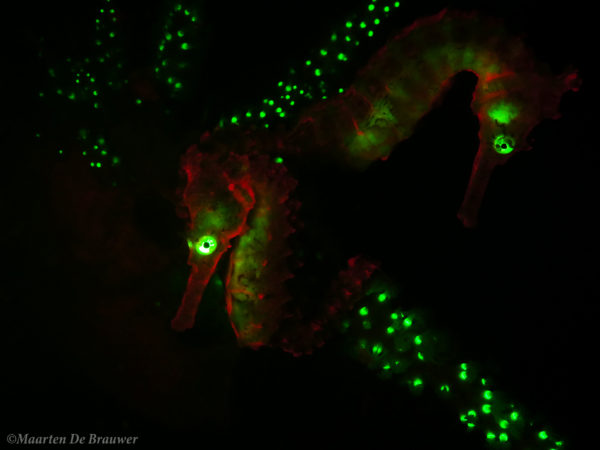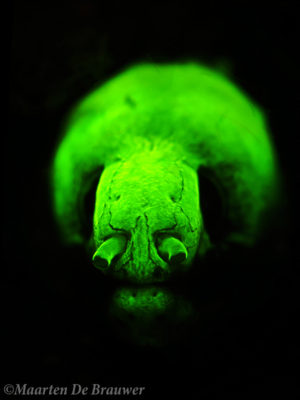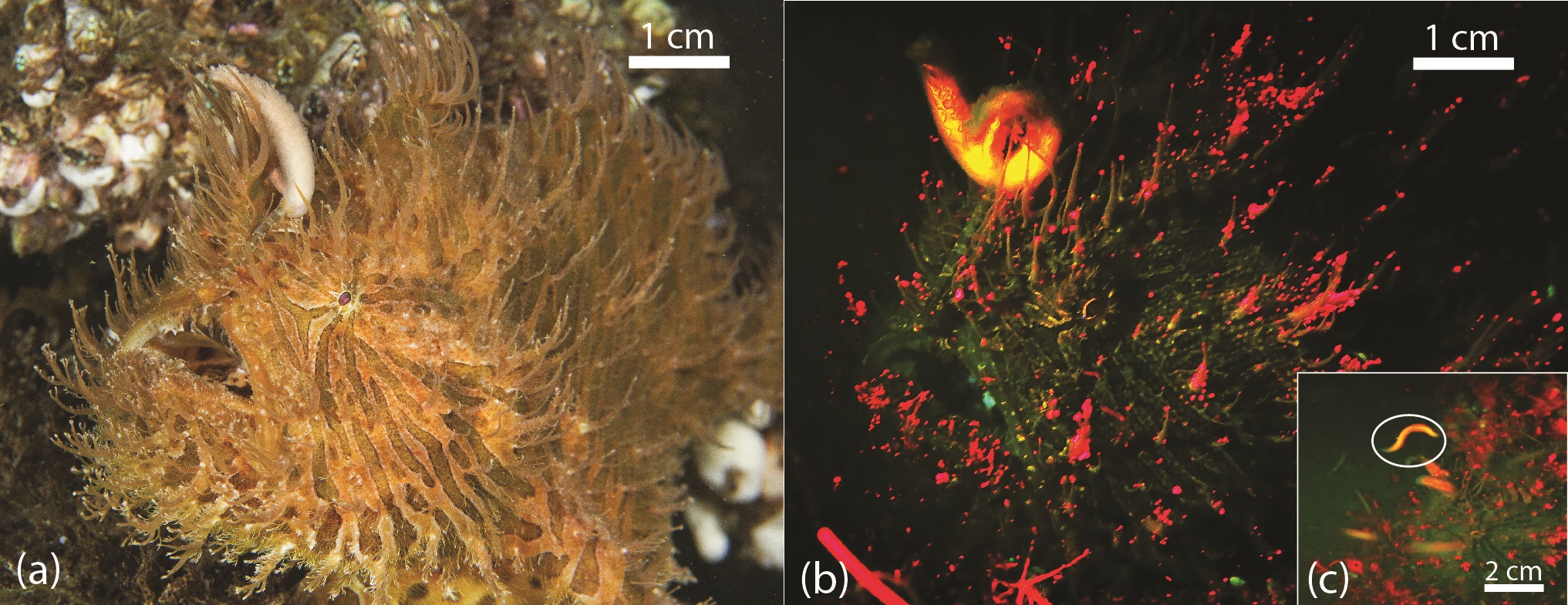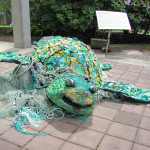This is a guest post form Maarten De Brauwer, a PhD candidate at Curtin University. You can find more of amazing work from Maarten on his social media sites, listed at the end of the article!

It isn’t the first time DSN gets it’s underwater rave on, whether we are showing you the fluorescent corals of coral reefs, Red Sea underwater disco, or fluo raving diving on the Great Barrier Reef, we’ve always been keen to show you how to have a great time underwater and look stylish (or at least bright) while doing so. A returning theme besides how awesome it looks, is why? Why would there be an entire world of dazzling colours underwater that us puny humans can only see by using specials tools? While I don’t pretend to know the answers, I might offer a few suggestions that could make you look at it in a different light…either that or confuse you even more while showing pictures of pretty glowing fish.

As a short recap, biofluorescence is not the same as bioluminescence. In the latter, fish produce their own light, the former (which this blog is about) reflects colours from an external light source at a different wavelength. You can find the technical details here. While diving, we can only observe biofluorescence using a few aids: a blue dive torch to stimulate fluorescence and a yellow filter in front of the mask to block the excess blue light and only see the reflected colours. Originally the blue torches used were UV-lights, but increasingly we are finding that normal, high intensity blue light actually works better. It also has the added benefit that it doesn’t make you go blind if you stare at it for too long.
So there we are, blue light in hand, yellow filter on, ready to marvel at all things fluo. The question remains why? Looking at what happens on land might give a few clues, because biofluorescence is not limited to the ocean. Birds, scorpions, butterflies, flowers, etc. all show biofluorescence. It has been suggested to play a role in attracting pollinators, mates, or even detecting light levels. One of the few functions that has been proven, is that it is used as a sexual signal in parrots.
Now that we’ve ended up at sex, it’s time to get back in the ocean.
- The beautiful fairy wrasses seem to use biofluorescence in a similar way as parrots. Males of the Red-eyed wrasse (Cirrhilabrus solorensis) show stronger aggression to other males that are fluorescent than to those who are not. So potentially fluorescence could be a way to see potential sexual competitors.
- A second suggestion is that small fish might use it as a secret way of signalling to each other. Red light does not travel far underwater, which would allow fish of the same species that are close (such as potential mates) to see the signals, but predators that swim by at a further distance would not see the reflected light.
- Predators could use biofluorescence to their benefit as well. Recently frogfish with fluorescent lures have been documented. Their orange fluo lures are the same colour as biofluorescent free-swimming worm found nearby. So these frogfish might be using fluorescence to attract prey.

Of course, all these explanations depend on whether or not fish can actually see fluorescence, which is still an important point of discussion. The fact that many species that are fluorescent also possess yellow filters in their eyes similar to what we use for diving hints at the fact that they might. But simultaneously, the low light levels found in the ocean might be too weak to stimulate the reaction. So alternatively, marine biofluorescence could just be a quirky side-effect of evolution that serves no real purpose. Even if that would be the case, we can still marvel at just how beautiful the hidden quirks of the ocean can be.
Want more from Maarten ? Check him out online!
Instagram: crittersresearch
Blog: crittersresearch.com
Twitter: DeBrauwerM
His website: https://crittersresearch.com/
References:
De Brauwer, M., & Hobbs, J. P. A. (2016). Stars and stripes: biofluorescent lures in the striated frogfish indicate role in aggressive mimicry. Coral Reefs, 35(4).
Gerlach, T., Sprenger, D., & Michiels, N. K. (2014). Fairy wrasses perceive and respond to their deep red fluorescent coloration. Proc. R. Soc. B, 281(1787).
Heinermann, P. H. (1983). Yellow intraocular filters in fishes. Exp. Biol., 43(2).
Michiels, N. K., Anthes, N., Hart, N. S., Herler, J., Meixner, A. J., Schleifenbaum, F., Schulte, G., Siebeck U. E., Sprenger, D. & Wucherer, M. F. (2008). Red fluorescence in reef fish: a novel signalling mechanism? BMC ecology, 8(1).






A friend and I were discussing biofluorescense in anemones. My hypothesis was that it may act as a sort of ‘bug light’ for the anemone’s crustacean prey. His argument was, given that it is mainly (exclusively?) observed in zooxanthellate anemones, bioflorescence is more likely an adaptation to regulate light quality/quantity for the anemone’s symbionts.
Absent rigorous data it’s just idle speculation but great fun to think about.
Hi Alex,
it’s definitely great fun to think about it reasons why anemones or other organisms fluoresce. As far as I know, most fluorescing anemones are indeed the ones with zoox, so I’ve always assumed it was a similar adaption as in corals. But you can never dismiss the ‘bug light’ hypothesis until it’s tested…how awesome would it be if it’d turn out to be real!
Would they survive on shallow waters? I mean I am thinking if they could be pets.
Hi Dan, most of the species I mentioned are found in shallow water. However, that doesn’t necessarily make them the greatest pets. There are a lot of ecological issues with the aquarium trade (such as destructive fishing practices), and keeping species like seahorses alive and healthy in aquaria can be very difficult without the right expertise and equipment. Having said that, yes, it would definitely be interesting to see them in an aquarium.